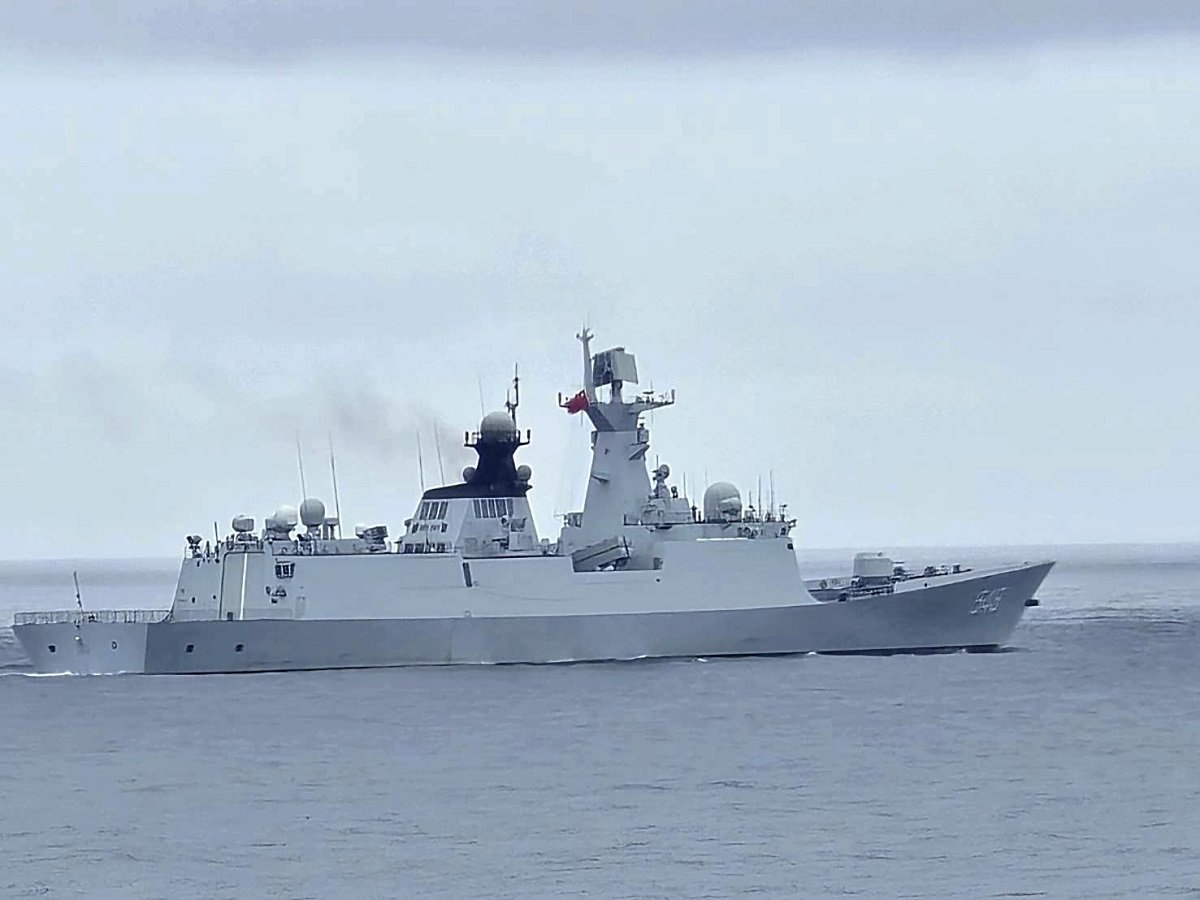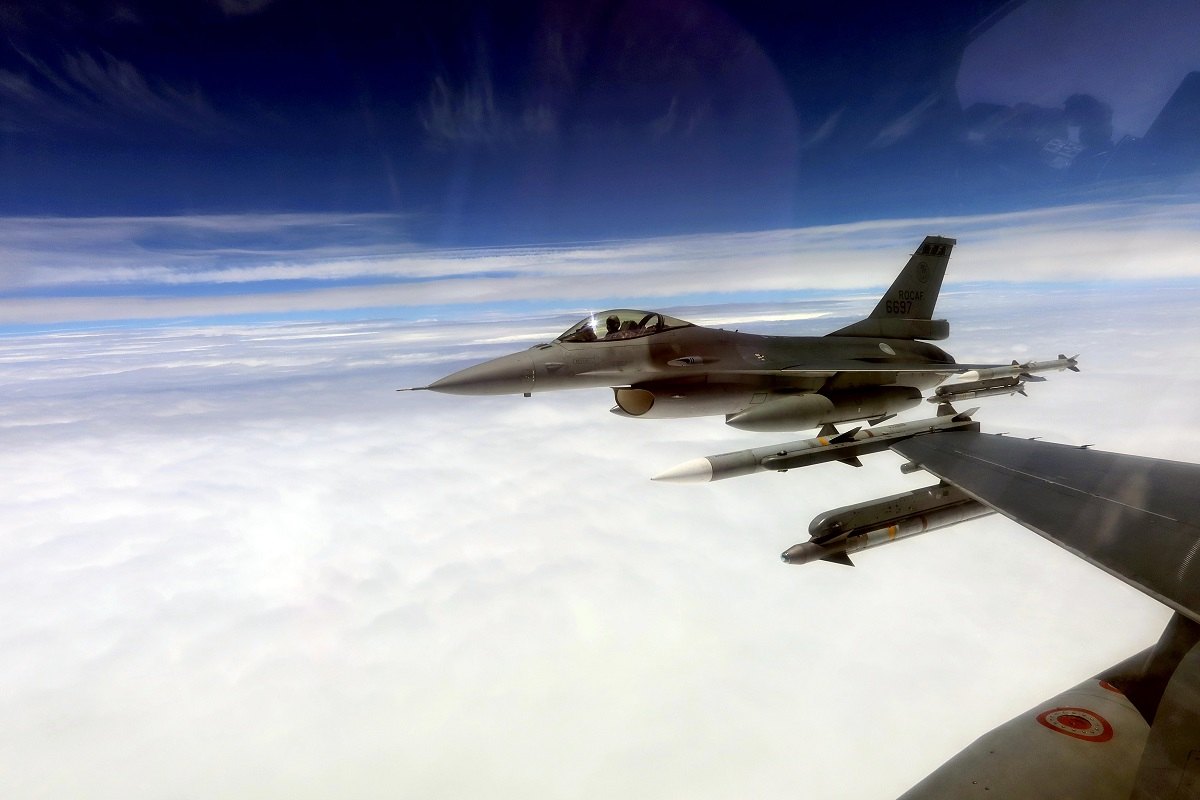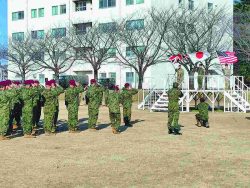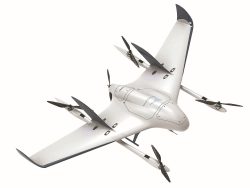Violation of Japan’s Airspace Reflects Growing Tension; China May Have Been Testing Vigilance, Surveillance Abilities

A Chinese frigate travels northwest of Taiwan’s main island.
16:53 JST, August 27, 2024
The unprecedented violation of Japan’s airspace by a Chinese military aircraft has highlighted the growing tension in the East China Sea, including the Taiwan Strait.
Considering China’s stance that it would not hesitate to launch a military invasion of Taiwan, the incursion might have been meant to test Japan’s vigilance and surveillance capabilities, among other things. Japan will cooperate with the United States and other countries to counter any attempt to unilaterally change the status quo by force.
Vessel deployed nearby
“This is the first violation of Japan’s airspace by a Chinese military aircraft. We are analyzing China’s intentions, and that’s all I can say for now,” a senior Defense Ministry official said with a stern face Monday night.
The Chinese aircraft violated Japan’s airspace off the Danjo Islands in Nagasaki Prefecture on Monday. Air Self-Defense Force surveillance control radar is deployed on Shimokoshiki Island near the Danjo Islands to monitor the East China Sea. Therefore, “it’s possible the aircraft came to spy on SDF’s vigilance and surveillance capabilities,” another senior ministry official said.
A Chinese military vessel was reportedly deployed nearby on the same day, and the vessel may have watched the reactions of the Maritime Self-Defense Force.
China is said to be building up its capability to invade Taiwan by 2027. The top priority for Beijing is to contain moves by the U.S. military when it invades Taiwan. To that end, China has adopted the Anti-Access/Area-Denial (A2/AD) military strategy to prevent an intervention by Japan and the United States.
The violation of Japan’s airspace might have been intended to examine this nation’s vigilance and surveillance capabilities, and its reactions, to help increase China’s A2/AD capabilities.
80% against Chinese aircraft

A Taiwan F-16 fighter jet operates as a precaution against Chinese joint military drills on May 23.
China’s military pressure on Taiwan has become more apparent in recent years. When then U.S. House of Representatives Speaker Nancy Pelosi visited Taiwan in 2022, China conducted military drills encircling Taiwan and ballistic missiles fired by China landed in the waters of Japan’s exclusive economic zone.
China again conducted large-scape military exercises involving joint operations of its army, navy and air and other forces around Taiwan as an angry response to an inauguration speech by Taiwan President Lai Ching-te, who took office in May this year. It has been pointed out that U.S. military and SDF bases in Okinawa Prefecture could be targeted for attack at the same time in case of a Taiwan contingency.
In parallel, the Chinese military is increasing its activities around Japan. China is focusing on practical operations in an air defense identification zone, or ADIZ, that it unilaterally established above the East China Sea. In January, The Yomiuri Shimbun reported that China had deployed multiple warships around the clock in waters near the borders of its ADIZ.
According to the Defense Ministry, the ASDF scrambled jets against foreign aircraft possibly violating Japan’s airspace a total of 85 times in July alone. Of this number, 72 scrambles, or 80% of the total, were against Chinese planes.
Shifting to southwest
The Foreign Ministry summoned China’s acting ambassador to Japan and lodged a serious protest immediately after the ministry confirmed the violation by the Chinese military aircraft. The Japanese government will strongly demonstrate its position not to allow China’s attempts to change the status quo, and it will cooperate with the United States and other likeminded countries to strengthen deterrence and response capabilities to vie with China.
With a possible Taiwan contingency in mind, Tokyo has been accelerating efforts to shift the focus of defense to the southwest by establishing camps on Yonaguni, Miyako, Amami-Oshima and Ishigaki islands and deploying units that will operate surface-to-ship and ground-to-air missiles.
“As China claims that large sections of the waters off the Danjo Islands are under its jurisdiction, the country might have started demonstrating it through actions,” said Kyushu University Prof. Chisako Masuo, who is familiar with China’s marine policy.
“China is concerned about Japan’s moves to strengthen its defense capabilities on the Nansei Islands, and it’s possible that the country is trying to weaken Japan by extending the ‘battlefront’ with Japan northward,” Masuo added.
"Politics" POPULAR ARTICLE
-

Japanese Language Requirement Eyed for Permanent Residency Status; LDP Plans Revisions of Laws on Foreigners
-
-250x167.jpg)
Japan Eyes Plan to Accept Up To 1.23 Mil. Foreign Workers by End of Fiscal 2028
-

AI-Driven ‘Zero Clicks’ Phenomenon Threatens Democracy; News Outlets Must Be Able to Recover Costs, Stay Independent
-

Japanese Public, Private Sectors to Partner on ¥3 Tril. Project to Develop Domestic AI, SoftBank to Be Key Firm Involved
-

Japan’s Defense Ministry to Extend Reemployment Support for SDF Personnel to Age 65; Move Comes Amid Ongoing Labor Shortage
JN ACCESS RANKING
-

As Chinese Tourists Shun Japan, Hotels and Stores Suffer
-

BOJ Gov. Ueda: Highly Likely Mechanism for Rising Wages, Prices Will Be Maintained
-

Core Inflation in Tokyo Slows in December but Stays above BOJ Target
-

Osaka-Kansai Expo’s Economic Impact Estimated at ¥3.6 Trillion, Takes Actual Visitor Numbers into Account
-

Japan Govt Adopts Measures to Curb Mega Solar Power Plant Projects Amid Environmental Concerns

























